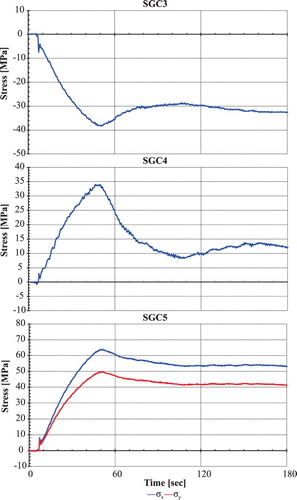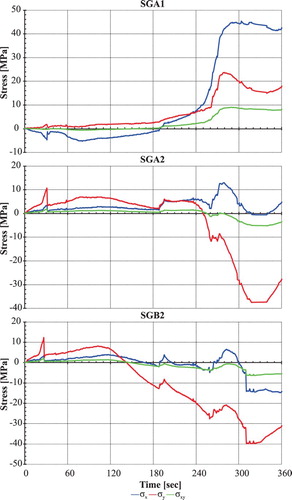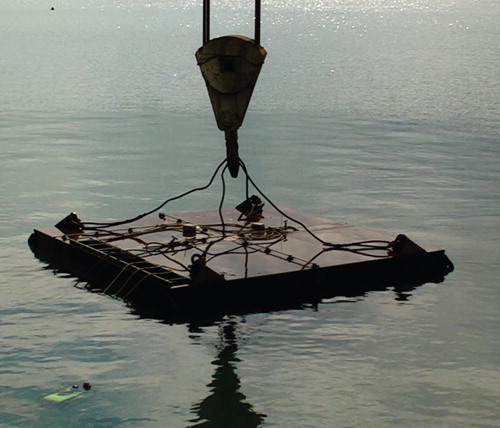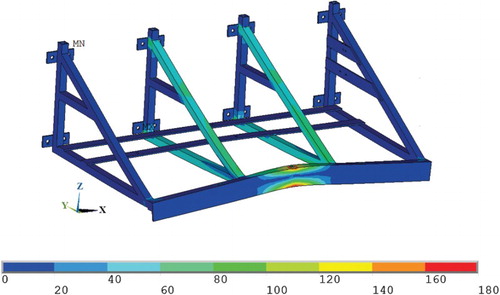Figures & data
Figure 1. Conceptual depiction of (a) internal application of SuSy devices inflated inside the double hull of an oil-tanker vessel and (b) external application of the SuSy salvage system inflated at the starboard side of the vessel.

Figure 2. External rescue devices attached on the demonstrator (gas tanks, inflatables in their protective cases and the support frames are shown).
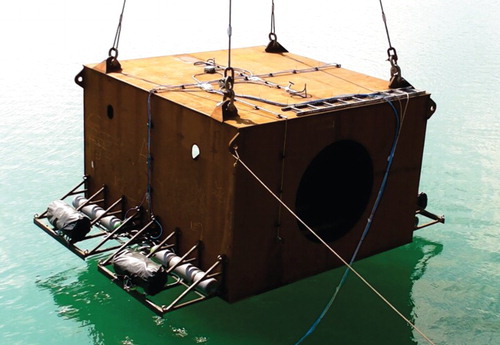
Figure 3. Middle section (a) and top view (b) of the double bottom demonstrator depicting the strain gauges’ positions (P and S denote port and starboard side respectively, dimensions in mm).
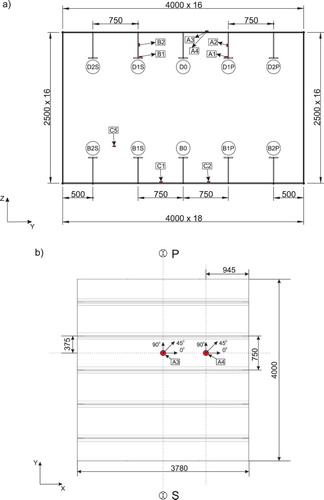
Figure 4. Sketch of the external frame depicting the strain gauges’ positions and measuring directions.
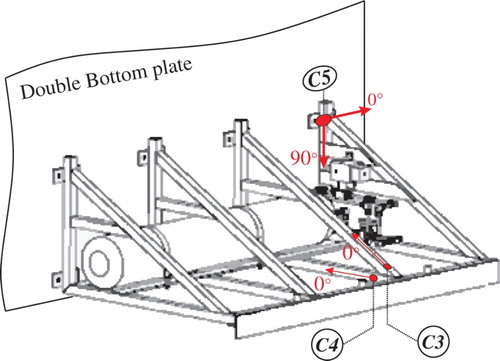
Table 1. Peak and mean stress values with their 95% confidence intervals for each measuring location for the emersion phase and forward (time > 120 s) along 0° (σx), 90° (σy), 45° (σxy) sensor's directions and the calculated equivalent von Mises stress, σν (units: MPa).
Figure 7. (a) Emersion of the partially inflated spherical inflatables at approx. 7 s (phase i); (b) beginning of the demonstrator's emersion at approx. 50 s (phase ii); (c) end of the demonstrator's emersion at approx. 120 s (phase iii).
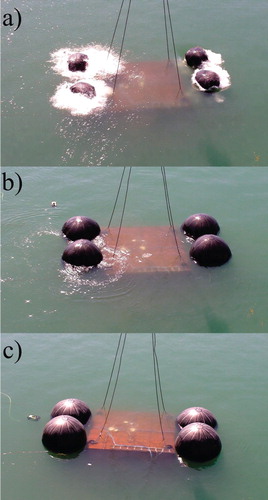
Figure 8. Stresses at the frame (sensors C3, C4) and at its attachment to the demonstrator (sensor C5).
